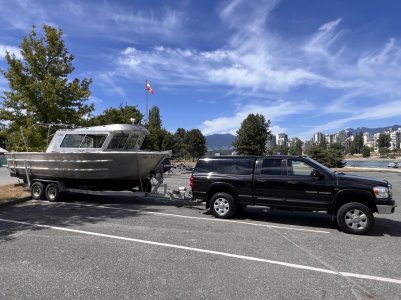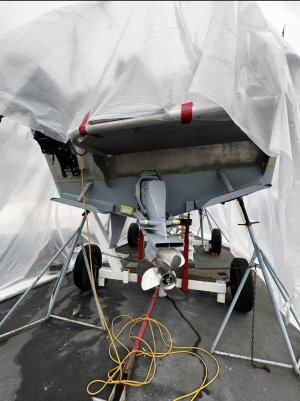Max123
Well-Known Member
I'd definitely stay away from the stepped/tapered hull extension. I will totally transform how the boat sits in the water at speed, can introduce porpoising issues and will be much more sensitive to weight distribution. Even getting the engine mounted at the right height is that much harder.
On a hull extension the weight of the engine bears down on the transom, which is in direct contact with the water. On a stepped pod, the transom is riding on the water about 30" in front of the engine which is cantilevered in the air. It turns the boat into a big teeter-totter, which is super sensitive to weight distribution and will inherently drive the bow up and stern down.
You currently have a centrally mounted inboard, so the current handling dynamic is all about having lots of weight at the boat's centre of gravity. Now, your are transferring all that weight to the transom, so you want the water to carry that weight - you don't want it cantilevered.
I'd go hull extension - as wide as you can - but make use you plan everything out with room for your anodes, trim tabs, transducer, ladder, trailer tie downs, transom D-rings, etc.
On a hull extension the weight of the engine bears down on the transom, which is in direct contact with the water. On a stepped pod, the transom is riding on the water about 30" in front of the engine which is cantilevered in the air. It turns the boat into a big teeter-totter, which is super sensitive to weight distribution and will inherently drive the bow up and stern down.
You currently have a centrally mounted inboard, so the current handling dynamic is all about having lots of weight at the boat's centre of gravity. Now, your are transferring all that weight to the transom, so you want the water to carry that weight - you don't want it cantilevered.
I'd go hull extension - as wide as you can - but make use you plan everything out with room for your anodes, trim tabs, transducer, ladder, trailer tie downs, transom D-rings, etc.
Last edited:


